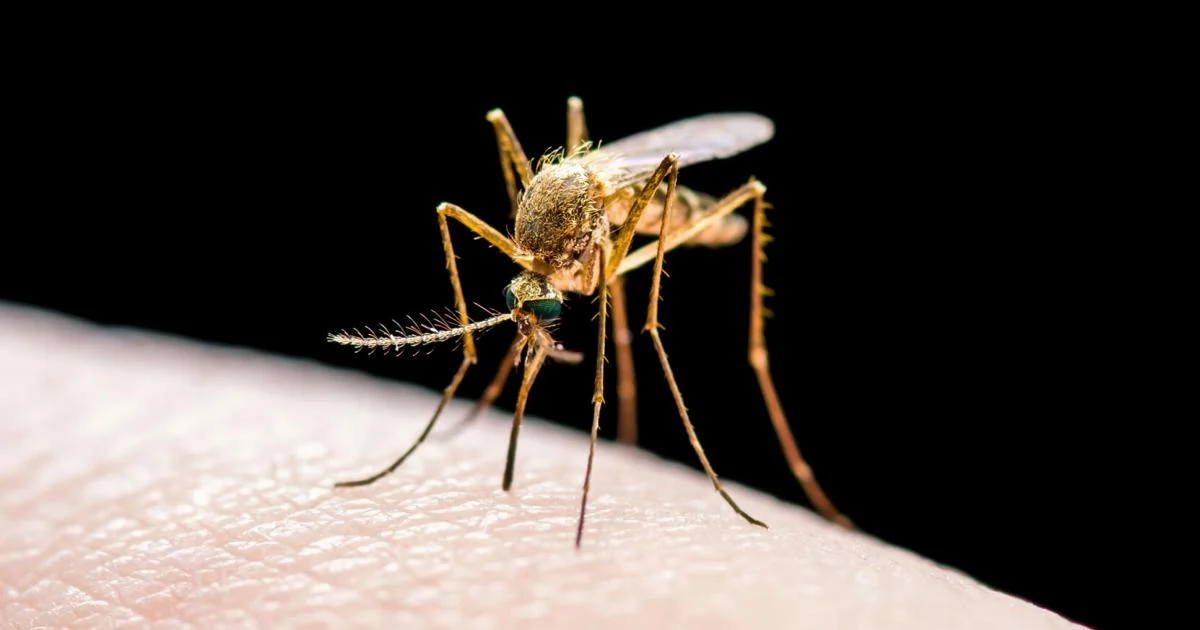Copyright thestar

What if the world’s deadliest parasite is learning to outsmart our best tools to fight it? Across the world, malaria cases are on the rise again. Not only is climate change expanding the range of mosquitoes that transmit it, but drug-resistant parasites are also making frontline treatments less effective and, in some cases, even undetectable by rapid diagnostic tests. David Fidock, a renowned malaria researcher and the CS Hamish Young Professor of Microbiology and Immunology at Columbia University Irving Medical Center in New York, has been tracking the disease’s winding trajectory over his 37-year career. “We can’t afford to be consistently a decade late in detecting the emergence of drug-resistant malaria parasites and even later in identifying the genetic cause,” he said. “But I think we are.” The World Health Organization (WHO) estimates that global cases of malaria increased from 252 million in 2022 to 263 million in 2023 and will continue to rise. Most of the cases and associated deaths are caused by Plasmodium falciparum, a parasite that is transmitted by infected Anopheles mosquitoes and that first transits through the liver before starting its rapid cycles of replication in human red blood cells. In severe cases, this parasite can invade upwards of 10 per cent of all red blood cells, with anemia or cerebral malaria being among the drivers of severe disease. While 94 per cent of the cases are in Africa, the disease is gaining a foothold in places like Myanmar and Venezuela. The U.S. government’s 2025 budget cuts to the United States Agency for International Development (USAID) and the President’s Malaria Initiative delivered an additional blow. It’s a “wrecking ball approach to global health,” said Fidock. He estimates that as drugs and bed nets sit in warehouses, malaria’s approximate 600,000 deaths a year could rise by about 100,000 in coming years, undoing decades of work. Thanks to genomics-enabled detection, new approaches to treatment and international collaboration, however, there are viable ways we can fight the spread of the disease. Fidock was elected president of the American Society of Tropical Medicine and Hygiene (ASTMH), and will be presiding over the plenary sessions at its annual meeting next month in Toronto — the first time it will be hosted outside of the U.S. At the event, leading health experts and researchers from around the globe will be sharing scientific breakthroughs and developing strategies to address emerging crises. Here, Fidock talked about malaria’s current challenges, new solutions, and why Westerners need to know more about vector-borne diseases. Do you think people in North America understand the real risks of malaria? In Western nations, a lot of people think malaria doesn’t exist anymore, or there’s a vaccine and it’s not a problem. There’s very little understanding of the impact of the disease. If the United States knew that one-in-10 children would die of a vector-borne disease before the age of five, it would be a serious issue, and people would do something about it. These illnesses have an enormous societal impact. As a global community, it’s incumbent on us to address them. With many of these, what’s a problem elsewhere will one day be our problem. Zika became an issue in Central America, and it appeared earlier in the southern U.S. Dengue and chikungunya are becoming worldwide diseases. Mpox, which was a major health threat in the Democratic Republic of Congo, is showing up in New York. These diseases don’t need visas, they don’t need passports, they can travel, and you can’t stop them. Climate change is helping the spread of many infectious diseases. Could malaria become a problem in North America? Actually, the southern United States was heavily burdened with malaria before the 1930s — that’s partially why they drained swamps in Florida and were able to build Disneyland. The CDC was an outgrowth of the earlier Communicable Disease Center, a branch of the Malaria Control in War Areas program based in Atlanta. This region was earlier filled with swamps, and there was plenty of malaria. Could malaria get re-established? It’s one of those diseases that needs a critical threshold, but there is no doubt that tropical infectious diseases and vector-borne diseases can enter and establish themselves in the southern United States. Dengue, Zika, and chikungunya are constant threats. I wouldn’t be surprised if you start seeing more local cases of dengue appearing in Canada, too. Where are you currently seeing a rise in malaria cases? Venezuela is a major concern in South America because of its weakened healthcare infrastructure systems and increasing poverty — it’s all very tied in. Poverty is a big factor since it means low-quality housing. The simplest way to not be exposed to malarial infection is to have high-quality housing with doors and windows. In Southeast Asia, Myanmar is a big issue because there was disinvestment from an adequate healthcare infrastructure delivery system. From there, it starts to radiate outwards. It’s hard to get a lot of information out of Myanmar, but malaria cases have spiked along the border with Thailand. How do vector-borne diseases perpetuate social inequities? Because malaria often concentrates in resource-poor rural areas, local economies struggle to support adequate vector control. In Africa, the average family expense for medical care is much greater than in the West. I’ve seen numbers where they could be devoting up to 20 per cent of their income to preventing and treating disease. This keeps affected countries in a stateof poverty because people spend a lot of money on healthcare. It also translates into lost productivity. Parasites are also mutating and becoming harder to detect, which is no doubt compounding the problem. Can you tell me a bit about the growing risk of diagnostic failure? Those risks are huge. There was a dependency on these rapid diagnostic tests. In the Horn of Africa, including Ethiopia and Eritrea, rapid diagnostic tests are used frequently to detect malaria parasites as the cause of febrile symptoms. Those parasites have now eliminated the parasite protein being detected. This leads to false negative results and incorrect treatment, thereby increasing the risk of severe and potentially fatal disease. Thankfully, there’s a lot of genomic surveillance and modelling that is investigating drug-resistant malaria. That’s proving very effective because then you can tailor local policies and target outbreaks. There’s a new WHO-led strategy called “High burden to high impact” where they’re not looking at it at a country level, but rather at a sub-national level and focusing on, “Where are the areas with the greatest disease burden? Where do those areas intersect with the greatest risk of drug-resistant malaria? Let’s concentrate our prevention and treatment efforts in those regions.” Antimalarial drug resistance (AMDR) to drugs is also a growing problem. What’s behind that rise? It’s not so much a case of overprescription of antibiotics, it’s that these fires are constantly being lit. Once parasites evolve the right combinations of mutations, they’ll start to spread. Also, if you or your child has severe malaria and you’re given three days of multiple pills to be taken twice daily, you might say, “Well, me or my kid are now feeling better. I’m going to bank the rest.” Incomplete dosage is a big issue — you just enable residual parasites to have the opportunity to acquire resistance and recrudesce [meaning it can recur]. Even with an effective drug, sub-optimal dosing is a proven way to drive resistance, which is why physicians tell patients to finish the prescribed course of treatment. What are some solutions to AMDR? The new strategy being advocated for is called triple combinations, where you know that the main drug, an artemisinin, is compromised, and then you add in partner drugs that neutralize the evolution of drug resistance. If one selects for parasites that are less susceptible, the other one becomes more effective. This is the case with the triple combination that combines lumefantrine and amodiaquine, which exert opposing selective pressures on malaria parasites, with a core artemisinin drug. If the partner drug fails, then it’s a whole different landscape, and malaria will skyrocket like it did in the past. So, there’s a lot of engagement in identifying drug-resistant malaria through molecular techniques. And there’s been a tremendous amount of capacity strengthening and infrastructure building. The Gates Foundation has played and continues to play a huge role in that, equipping African labs with the technology to run these genetic tests and see where resistance is emerging. Major pharmaceutical companies, along with partners including the Medicines for Malaria Venture and the World Health Organization, are key partners in the fight against malaria. Despite all these challenges, what continues to give you hope in your field? There is a lot of innovation in the mosquito vector control space, such as using antimalarial drugs that can sterilize the infection in a mosquito if it lands on a bed net. Companies and academics are also developing long acting injectables for people, essentially like we use as birth control, and applying that technology to malaria to prevent the infection. Plus, scientists from the U.S., Europe, and all across the globe make up a very collaborative community that is very focused on the common goal of malaria prevention and effective treatment and reduction of the burden of disease. It’s one of the few cases I know where there’s been this extraordinary coordination between academia and industry, within a humanitarian perspective, to address global health and equity issues. The ultimate goal that we are all striving for is to eliminate malaria. At the ASTMH’s annual meeting taking place in Toronto from November 9 to 13, Dr. Fidock will be diving into malaria’s current challenges, impacts on affected communities and how people working in tropical medicine can pivot to continue and effectively fight to eliminate these infectious diseases. MaRS created this article in partnership with Destination Toronto.



